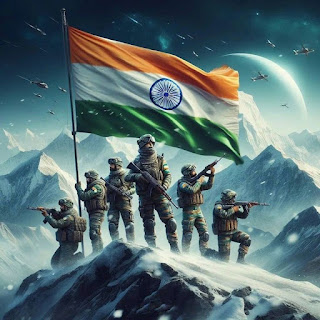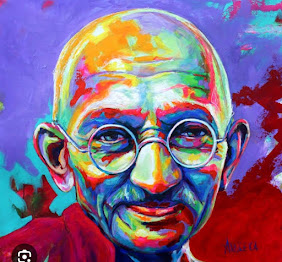The story of the formation of the Indian Army இந்திய ராணுவம் உருவான கதை
The story of the formation of the Indian Army
The formation of the Indian Army is deeply intertwined with the history of the subcontinent, its military traditions, and the colonial legacy. Here’s a brief overview of its formation:
1. Early History and Pre-Colonial Era
Before the British colonial period, various kingdoms and empires in India maintained their own armies. These forces were often led by regional rulers, with a focus on defending territories and engaging in military campaigns. Some notable armies were those of the Maurya Empire (c. 322–185 BCE), the Gupta Empire (c. 320–550 CE), and the Mughal Empire (1526–1857). These armies had a mix of infantry, cavalry, and artillery, and military service was often a duty of the warrior class.
2. British East India Company and the Early Beginnings
The modern Indian Army as we know it began taking shape under the British East India Company. In the 17th and 18th centuries, the Company began to establish its own private army to protect its commercial interests. The forces were initially made up of European soldiers, but over time, the British began recruiting Indian soldiers, known as "sepoys," who formed the bulk of the Company's military force.
By the early 19th century, the British East India Company’s army had grown significantly and became the foundation of the future Indian Army. During this period, the British introduced new military structures, training systems, and modernization, though Indians were largely excluded from senior officer positions.
3. The Indian Rebellion of 1857
The Indian Rebellion of 1857 (also known as the Sepoy Mutiny) was a significant turning point in Indian military history. The rebellion was triggered by a combination of factors, including discontent with the British East India Company’s rule, religious tensions, and poor treatment of Indian soldiers. After the rebellion was suppressed, the British government dissolved the East India Company and took direct control of India, marking the beginning of the British Raj (1858–1947). The Indian Army was reorganized and expanded under the British Crown, with an increased presence of British officers and the establishment of a colonial military structure.
4. British Raj and Expansion of the Indian Army
During the British Raj, the Indian Army became one of the largest military forces in the world. It was used to maintain British control over India and to fight in various campaigns across the empire, including in Africa, the Middle East, and Southeast Asia. The army was largely composed of Indian soldiers, who were recruited from various regions and ethnic groups, but senior positions remained predominantly occupied by the British.
The British also introduced reforms that affected the structure and composition of the Indian Army, including the creation of new regiments and specialized units such as the Indian Cavalry, Indian Engineers, and Indian Artillery. The Indian Army was seen as a key tool for maintaining British imperial dominance.
5. World War I and II
The Indian Army played a crucial role in both World War I (1914–1918) and World War II (1939–1945). During World War I, over 1.3 million Indian soldiers served, fighting in theaters such as Europe, Africa, and the Middle East. More than 74,000 Indian soldiers lost their lives, and many were awarded medals for bravery.
In World War II, the Indian Army grew even larger, with over 2.5 million men enlisted. Indian soldiers fought in major campaigns in North Africa, Italy, and Southeast Asia. Notably, the Indian National Army (INA), led by Subhas Chandra Bose, was formed in an attempt to resist British rule during the war.
6. Post-Independence and the Formation of the Modern Indian Army
Following India’s independence in 1947, the Indian Army underwent a major transformation. The British left behind a well-organized military infrastructure, but the newly independent Indian government needed to reconfigure the army to reflect the diverse, sovereign nation. The Indian Army inherited the British military structure, including its ranks, regiments, and training programs, but Indian leadership and command were established.
The first Indian Army Chief was General Sir Roy Bucher, who was replaced by Indian General K. M. Cariappa in 1949. Cariappa became the first Commander-in-Chief of the Indian Army after independence. The Indian Army was involved in the first major conflict with Pakistan over Kashmir in 1947-48, which led to the establishment of the Line of Control (LoC) in Kashmir.
7. Modern Indian Army
Since independence, the Indian Army has evolved into one of the largest standing armies in the world. It has played a central role in securing India's borders, combating internal insurgencies, and contributing to peacekeeping missions globally. The Indian Army has also modernized its equipment, enhanced its training, and worked towards making its leadership more diverse and representative of India’s people.
Conclusion
The Indian Army's formation is a product of centuries of military history, British colonialism, and India's struggle for independence. From its early days under the Mughal Empire and British East India Company to the present, the Indian Army has continuously adapted to meet the needs of the nation and its people. Today, it stands as a symbol of India's strength and resilience on the global stage
"This Content Sponsored by Genreviews.Online
Genreviews.online is One of the Review Portal Site
Website Link: https://genreviews.online/
Sponsor Content: #genreviews.online, #genreviews, #productreviews, #bestreviews, #reviewportal"




Comments
Post a Comment